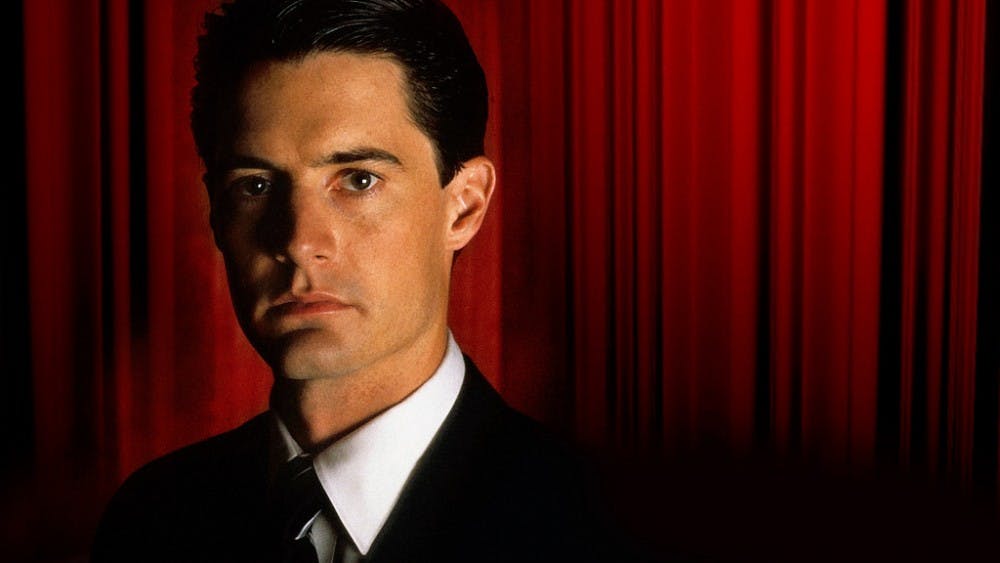Note: This article contains spoilers for the original run of "Twin Peaks."
Consider it a feat of Hollywood magic that “Twin Peaks,” the cult classic to begin and end all cult classics, finally returned in 2017. After years of speculation and months of anticipation, the first four of the eight planned episodes that will make up the third season of “Twin Peaks” became available to fans May 21. (In a manner indicative of the current television landscape, these episodes are limited for the time being to those who subscribe to the premium Showtime network.)
Like many television shows resurrected from the dead, there was reason to worry, in the lead-up to the third season, whether “Twin Peaks: The Return” would simply rely on the nostalgic tropes that defined the classic series in the early 1990s—a cherry pie here, some damn fine coffee there, more dancing dream men. Indeed, the highly publicized photo shoots that graced the covers of Entertainment Weekly back in March presented members of the aging original cast in near-identical garb to what their characters wore 26 years ago, a juxtaposition that was, well, a little weird. One of the oft-cited problems in the oft-maligned (perhaps unfairly so) second season was that, after the central mystery of Laura Palmer’s killer had been solved, the eccentric lives of Twin Peaks’ inhabitants could not sustain a show on their strength alone. A third season that merely renewed the action in that once-sleepy town, with all the same players, hardly seemed an improvement.
These fears are put to rest by the season premiere alone. So much of what makes the newest additions to “Twin Peaks” great is what distinguishes them from their forebears. Perhaps most striking are the series’ forays out of its hometown. Though the Douglas firs and cascading waterfalls of the Pacific Northwest remain the scenery that greets viewers in an updated take on the iconic title sequence, it’s the action that occurs in, of all places, New York City, that is the most haunting in the first new episode. Evoking the shady bureaucracies of 2001’s “Mulholland Drive,” one of the biggest mysteries of the new season is the presence of a giant glass box in a high-security New York skyscraper. While the battle between good and evil that raged in the woods of Twin Peaks once seemed confined to that town, “Twin Peaks: The Return” makes it clear that these spirits are afoot everywhere. (Unfortunately, “Buckhead, South Dakota” doesn’t quite have the ring to it that “Twin Peaks” does.)
Gone, too, is the signature jazz shuffle of Angelo Badalamenti’s score, though the composer still offers his touch to the new series. In keeping with David Lynch’s renewed vision for the show, Badalamenti opts for low, eerie rumblings over campy fare. Most indicative of the new sound is a terrifying, pitched-down remix of Muddy Magnolias’ “American Woman,” used to introduce Dale Cooper’s long-haired, leather-clad doppelgängers.
The series continues where the original run left off before its cancellation, with FBI Special Agent Dale Cooper trapped in the surrealist limbo of the Black Lodge. His aforementioned doppelgänger, meanwhile, roams among a seedy crowd as a remorseless murderer. Kyle MacLachlan, who played Agent Cooper’s indefatigable virtuousness with such skill in the old series, shows off his range as a veteran actor with his portrayal of Cooper and his doppelgängers (or two). It’s almost comical to see Cooper rendered as a villain, but the actions of that character are anything but—a jarring reversal of roles from the FBI agent who seemingly knew no wrong.
The new “Twin Peaks,” however, does not avoid nostalgic touch points. We get appearances from familiar faces, even though it isn’t clear how or if they will contribute to the plot: Deputy Andy (Harry Goaz) and receptionist Lucy (Kimmy Robertson) are adorably married with a grown child, cueing a bizarre cameo from Michael Cera; Laura Palmer’s erstwhile boyfriend Bobby Briggs (Dana Ashbrook) now works with the Twin Peaks police department alongside Deputy Hawk (Michael Horse); Shelly Johnson (Madchen Amick) of the Double R Diner remarks that notoriously un-cool James Hurley (James Marshall) is “still cool”; Dr. Lawrence Jacoby (Russ Tamblyn) is spray painting shovels for some reason. Sometimes these scenes feel awkward and forced, but it is refreshing to see the old crew again, and the show makes sure not to dwell too much on its past.
Ultimately, “Twin Peaks: The Return” showcases the direction of David Lynch—all black comedy, dream sequences and shots held past the point of comfort—and sets itself apart from its predecessor as a show all to its own. By abandoning some of the trappings of the original “Twin Peaks,” Lynch takes the show on a deeper, darker path into its bizarre world.
Get The Chronicle straight to your inbox
Signup for our weekly newsletter. Cancel at any time.

